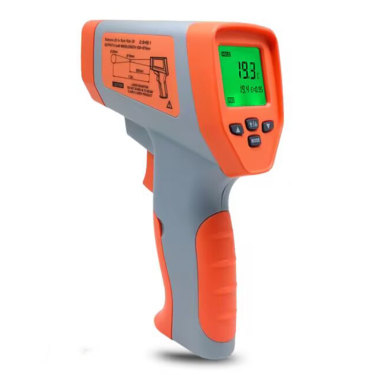
# Oven Thermometer: Essential Tool for Accurate Baking and Cooking
## Why an Oven Thermometer is a Must-Have for Every Kitchen
Many home cooks and bakers rely solely on their oven’s built-in temperature display, unaware that these can often be inaccurate by as much as 25-50°F (14-28°C). An oven thermometer provides the truth about your oven’s actual temperature, ensuring your culinary creations turn out perfectly every time.
## How Oven Thermometers Improve Your Cooking Results
Precision in temperature control is crucial for successful baking and cooking. Whether you’re roasting meats, baking bread, or making delicate pastries, even small temperature variations can significantly impact your results. An oven thermometer helps you:
- Achieve consistent baking results
- Prevent undercooked or overcooked dishes
- Understand your oven’s hot spots
- Adjust recipes based on your oven’s actual temperature
## Types of Oven Thermometers Available
Analog Dial Thermometers
These traditional thermometers feature a metal dial with an easy-to-read face. They’re durable, don’t require batteries, and typically hang from an oven rack.
Digital Probe Thermometers
More advanced models offer digital displays with probes that can be placed in different areas of the oven. Some even connect to smartphone apps for remote monitoring.
Infrared Thermometers
While not placed inside the oven, these can quickly check surface temperatures of baking stones or pans before cooking.
## How to Use an Oven Thermometer Effectively
To get the most accurate readings from your oven thermometer:
- Place it in the center of the middle rack where most cooking occurs
- Allow at least 20 minutes for the oven to stabilize at the set temperature
- Check the thermometer before putting food in the oven
- Rotate its position occasionally to identify hot spots
- Calibrate your oven’s thermostat if there’s a significant discrepancy
## Maintaining Your Oven Thermometer
To ensure ongoing accuracy:
- Clean it regularly according to manufacturer instructions
- Avoid sudden temperature shocks (don’t move from hot to cold rapidly)
- Check its accuracy periodically by testing in boiling water (should read 212°F/100°C at sea level)
- Replace if it becomes damaged or shows inconsistent readings
Keyword: oven thermometer
## The Impact on Your Cooking
Investing in a quality oven thermometer is one of the simplest ways to elevate your cooking and baking. When you know exactly what temperature your oven reaches, you gain control over:
- Browning and caramelization
- Moisture retention in meats
- Rise and texture of baked goods
- Cooking times for all your recipes
For serious home cooks and professional chefs alike, an oven thermometer isn’t just helpful—it’s essential kitchen equipment that pays for itself in consistently better results.